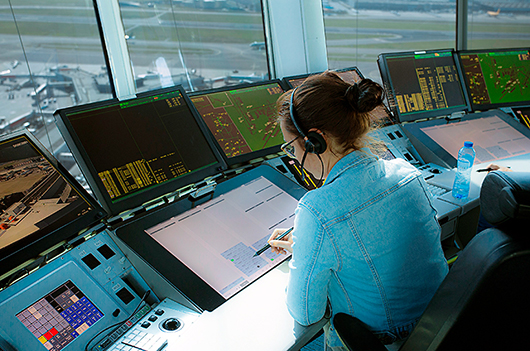Our workforce prepares the future
With tens of thousands of passengers travelling across Europe on a daily basis, it is not surprising it takes, on average, three to four years to qualify to become an air traffic controller. These core competences are honed during on-the-job training, recurrent training and further skills development relevant to work in tower control, approach and radar control.
Air traffic control is a collaborative profession where controllers (ATCOs) rely on a support network of air traffic safety electronic personnel (ATSEP). These technical specialists support the electronics and software which enable air traffic services to function. ATSEP comprise engineers, technicians, and computer hardware and software specialists who are responsible for the specification, procurement, installation, calibration, maintenance, testing and certification of ground electronic systems used to help control aircraft movements.
Digital skills are becoming increasingly important in the European Digital Sky and new recruits are sought who succeed in a technological environment. Putting into practice the latest Artificial Intelligence (AI) algorithms, working with satellite-based communications and harnessing the latest software capabilities are all part of building a future-proof airspace infrastructure.
Gain an insight into one of our control centers! Skyguide’s Pierre-Etienne Lévêque, Head of ACC West / Geneva, talks about the challenges he’s currently facing.











